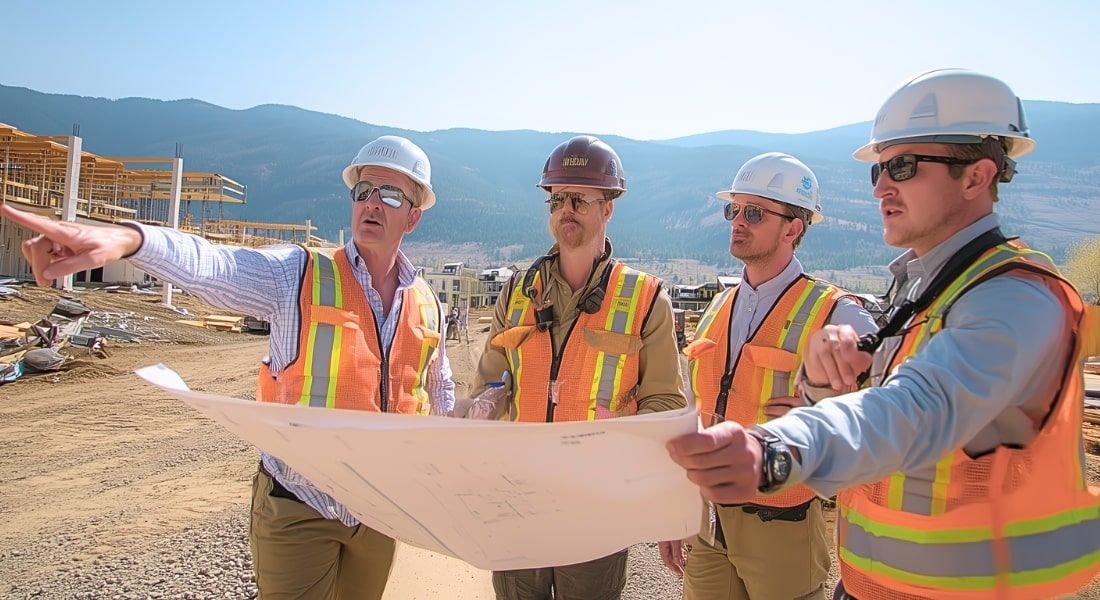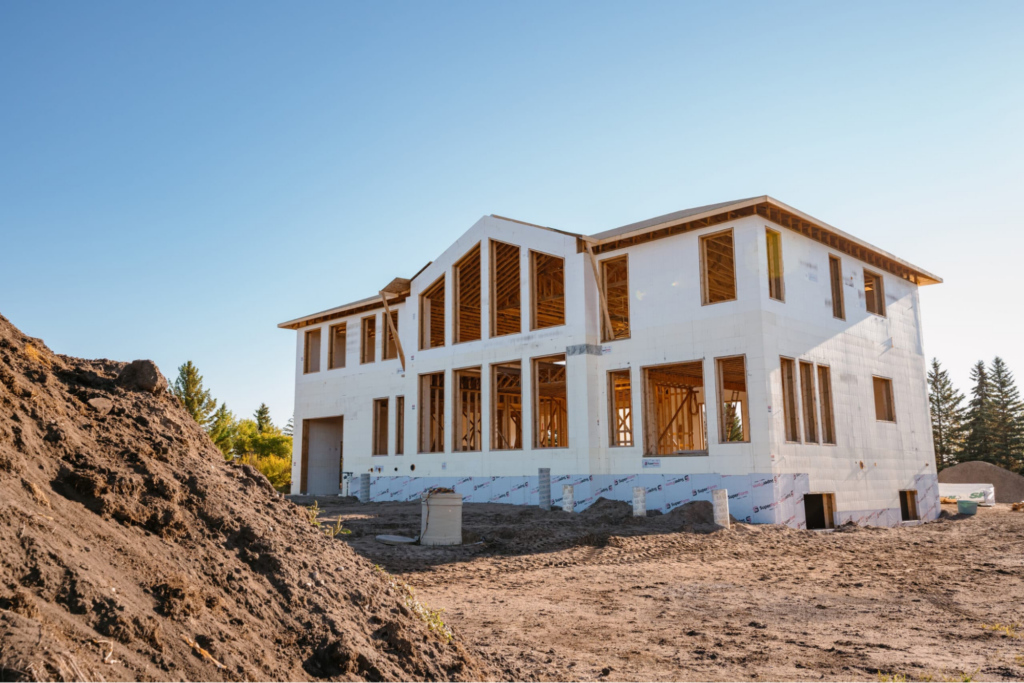Designing Residential Complexes in Disaster-Prone Areas
Natural disasters are occurring more frequently and with greater intensity across North America. Canada experiences around 8,000 wildfires annually, and 2023 marked a historic year with over 15 million hectares burned. In the U.S., the number of billion-dollar weather disasters has more than doubled since the 1980s. Today, the country experiences more than 20 major weather-related events annually.
Designing residential complexes in these high-risk zones requires more than visual appeal or basic functionality. It requires a deep commitment to safety, durability, and long-term resilience. Modern construction systems, such as insulated concrete forms (ICF), provide an ideal solution. They offer the strength and durability to withstand various disasters.
This guide outlines six key strategies for designing disaster-resilient residential complexes. It also highlights how ICFs can help meet the growing need for safety and performance.
6 Key Principles for Designing Residential Complexes in Disaster-Prone Areas
1. Start with Site Assessment and Location Planning
Designing Residential Complexes begins with understanding the land. Experts must study soil strength, flood risk, earthquake fault lines, and wind exposure to inform their decisions. They also assess drainage patterns, elevation, and distance from natural hazards such as rivers, forests, or coastal zones.
This data shapes decisions about foundation design, site layout, and structural requirements. A careful site assessment reduces long-term risk, improves insurability, and supports safer building placement. Overlooking these early steps can lead to costly repairs—or worse, total loss—after a disaster.
2. Use Strong Structural Systems
A safe residential complex starts with a continuous load path. Architects and engineers must design all structural elements to transfer forces from the roof to the ground without interruption. This approach helps the building resist wind, seismic shocks, and impact loads.
Multi-unit developments, especially those with a unified structural system, benefit greatly. A weak point in one unit can threaten the stability of others. ICF construction provides a seamless concrete shell, making it easier to achieve consistent strength across all units. Unlike wood framing or CMU, ICF buildings perform exceptionally well under lateral loads and seismic stress.
By ensuring structural integrity, you also ensure greater safety for the occupants and assets within the structure.
3. Strengthen the Building Envelope
The building envelope acts as the first line of defense against natural forces. A compromised envelope allows wind, water, or fire to infiltrate, often leading to internal collapse or widespread damage.
An effective envelope includes:
- Impact-rated windows and doors
- High-performance roofing
- Airtight sealing and flashing
- Continuous insulation
ICF walls support these elements with a flat, solid, airtight surface. They minimize air leakage, reduce thermal bridging, and help secure openings. Reinforced bucks and anchor systems enhance the reliability of window and door installations, particularly in high-stress conditions.
A durable envelope helps keep homes intact even when storms or fires hit.
4. Plan for Fire Resistance and Containment
Wildfires and structural fires pose significant threats to residential buildings, particularly in densely populated areas. A fire-safe design includes non-combustible materials, compartmentalized floor plans, and fire-rated assemblies.
Best practices include:
- Class A fire-rated roofing
- Fire-resistant exterior and interior finishes
- Fire separation walls between units
- Smoke barriers and rated doors
ICF walls are fire-resistant. They have passed testing, showing fire resistance ratings with no structural failure. They do not burn or add fuel to fires and can maintain structural integrity for up to four hours. This delay buys critical time for evacuation, fire response, and containment.
These features also align with current wildfire safety practices recommended by FireSmart Canada and the National Fire Protection Association (NFPA). ICF construction helps meet code requirements while protecting buildings and the lives of those within them.
5. Protect Key Utilities
Power, water, and HVAC systems often fail during emergencies, right when they’re needed most. Protecting these systems requires strategic design and smart material choices.
Recommendations include:
- Elevating mechanical equipment above known flood levels
- Anchoring rooftop units to resist wind uplift
- Installing backup power systems
- Routing utilities through protected zones
ICF systems help safeguard utilities by embedding service lines within the insulated wall cavity. The concrete core shields them from fire, impact, and extreme temperatures. ICF walls also offer passive temperature control, helping maintain livable conditions when power is out.
6. Choose Durable Low-Maintenance Materials
Environmental wear and tear add up in disaster-prone regions. Moisture, pests, UV exposure, and thermal cycling degrade common building materials over time.
Resilient design requires:
- Rot- and mold-resistant surfaces
- Pest-proof insulation
- UV-stable cladding and sealants
- Corrosion-resistant fasteners and connectors
ICF walls resist mold, mildew, and insects. The rigid foam insulation does not support organic growth, and the solid concrete core is impenetrable to pests. With fewer seams and a tighter envelope, the building remains protected from gradual deterioration.
Design for Rapid Recovery
Structures that survive a disaster but take months to repair still displace residents and strain local resources. Designing for recovery means selecting systems that can be easily inspected, cleaned, and put back into use quickly and efficiently.
Key strategies include:
- Standardizing materials and components for faster replacement
- Using modular interior layouts to isolate damage
- Including access panels for easy inspection and repairs
- Marking emergency exits and backup systems
ICF walls often remain structurally sound after exposure to fire or flood. You may need to replace the surface materials, but the core stays intact. That means faster recovery and fewer costly delays.
Why ICF Is the Right Choice for Resilient Design
Insulated concrete forms meet multiple goals at once: structural safety, fire resistance, energy efficiency, and long-term durability. It’s not a one-dimensional upgrade—it’s a full system improvement.
ICF buildings are:
- Rated for 200+ mph winds
- Engineered for seismic resistance
- Fire-rated for up to 4 hours
- Water-resistant and mold-proof
- Insulated to R-22 and above
- Durable and low-maintenance for decades
That makes ICF construction suitable for everything from suburban neighborhoods to urban mid-rises. As disasters become more frequent, builders who adopt ICF systems are not just meeting codes—they’re setting higher standards.
Additional Planning Considerations
Building resilient homes takes more than good materials. Execution and community support also play a role.
Developers and project teams should:
- Collaborate with geotechnical and structural experts
- Review local climate projections and hazard maps
- Conduct third-party inspections during construction
- Provide resident education on safety features and emergency procedures
When people know how their buildings work, they’re more confident in an emergency. Clear communication is essential for maintaining safety, both during and after a disaster.
Build Safer Residential Communities with Superform ICF
The need for housing is growing, even in regions where natural risks are high. In addition, Developers who plan and invest in performance-based systems protect not only their projects but also the communities they serve.
ICFs do more than build strong, efficient structures—they offer a foundation for long-term resilience. Building with ICFs reduces maintenance, speeds up recovery, and helps meet evolving building codes and insurance standards.
Looking to build better in high-risk areas? SuperForm ICF provides tested solutions that address today’s most demanding challenges. Contact our team for project support, technical details, and expert guidance.




-min.jpg)
